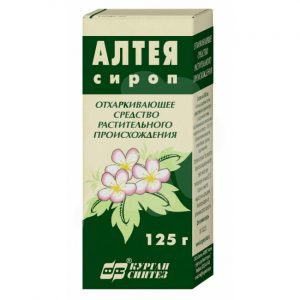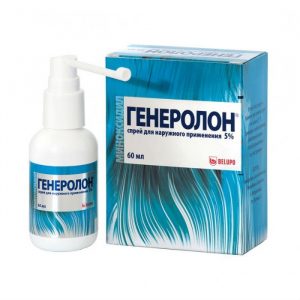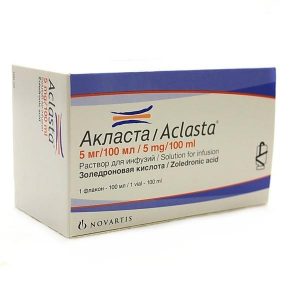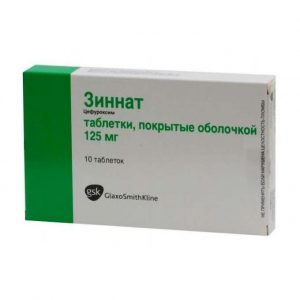Description
Latin name
Dramina
Release form
Tablets 50 mg. 10 tablets in PVC / Al blister. One blister along with instructions for use is placed in a cardboard box.
Pharmacological action of
H1-histamine receptors
blocker ATX code: R06AX
Pharmacological properties of
Pharmacodynamics: blocks histamine H1 receptors and M-cholinergic receptors of the central nervous system. Inhibits the vestibular apparatus of the inner ear, acting primarily on otoliths, in high doses – on semicircular canals. It has an antiemetic, anorexigenic, sedative, moderate antiallergic effect, eliminates dizziness.
Pharmacokinetics: after oral administration, the drug is well absorbed, distributed to organs and tissues. The effect of the drug appears after 15-30 minutes and lasts for 3-6 hours. Almost completely excreted in the urine within 24 hours. Small amounts are excreted in breast milk.
Indications
– motion sickness (motion sickness, automobile illness, air sickness)
– prevention and treatment of symptoms of vestibular and labyrinth disorders (dizziness, nausea, vomiting), with the exception of symptoms caused by antitumor therapy
– Meniere’s disease.
Contraindications
Hypersensitivity to the drug, epilepsy, acute exudative and vesicular dermatoses, children under 3 years of age, pregnancy, lactation.
Precautions:
Convulsive syndrome, angle-closure glaucoma, prostate hyperplasia, asthma, cardiovascular disease, hyperthyroidism, stenotic peptic ulcer, pyloroduodenal obstruction and obstruction of the bladder neck.
Pregnancy and lactation srdl6frd6prd6prd6pf6prpf6prd6 ) Perhaps with extreme caution (II-III trimester) if the expected effect of therapy exceeds the potential risk to the fetus.
Breastfeeding should be discontinued during treatment.
Special instructions
The ability to influence the reaction rate when driving or working with other mechanisms:
Considering the side effects, caution should be exercised when engaging in potentially dangerous activities that require increased attention and speed of psychomotor reactions (including driving).
Composition
1 tablet contains: Noe substance – dimenhydrinate
50 mg Excipients: lactose monohydrate – 112.86 mg Microcrystalline cellulose – 57.50 mg magnesium stearate – 1.150 mg of povidone K30 – 4,247 mg crospovidone – 4.247 mg.
Side effects
Side effects frequency parameters: very common (? 1/10), often (? 1/100,
Blood and lymphatic system disorders:
Very rare: hemolytic anemia, agranulocytosis, neutropenia, leukopenia, thrombocytopenia or pancytopenia
Immune system disorders:
Rarely: anaphylactic shock
Mental disorders:
Often: mood changes, anxiety, stiffness of movements. srdlkop.
Violation of the nervous system:
Often: drowsiness.
Infrequently: impaired sense of balance, impaired concentration and memory impairment (more often in elderly patients), tremor, lack of coordination, confusion, hallucinations.
Rarely: headache, sleep disturbance, dizziness, orthostatic hypotension.
Very rare: paradoxical stimulation of the central nervous system (especially in children).
Impaired vision:
Rarely: glaucoma, vision problems (dilated pupil, blurred vision, or split image).
Hearing impairment and labyrinth disorders:
Rarely: tinnitus.
Disturbance from the heart:
Rarely: heart palpitations, tachycardia and hypotension.
Violation of the respiratory system, chest and mediastinal organs:
Often: nasal congestion.
Disorders of the gastrointestinal tract:
Often: dry mouth, constipation, diarrhea, nausea, abdominal pain.
Disorders of the liver and biliary tract:
Unspecified frequency: impaired liver function (cholestatic jaundice).
Violation of the skin and subcutaneous tissue:
Rarely: rash, redness.
Violation of the kidneys and urinary tract:
Often: impaired urination (urinary retention due to anticholinergic action).
General disorders and disorders at the injection site:
Rarely: edema (less often – Quincke edema).
If any of the side effects indicated in the instructions are aggravated, or you notice any other side effects not listed in the instructions, inform your doctor.
Drug Interactions
Enhances the effects of atropine, tricyclic antidepressants, catecholamines, barbiturates, alcohol, sedatives and hypnotics, antipsychotics, weakens the effect of corticosteroids, anticoagulants. Reduces response to apomorphine. Reduces the depressive effect of acetylcholine on the heart muscle. The combination with bismuth preparations, scopolamine, painkillers and psychotropic drugs increases the likelihood of visual impairment. Incompatible with ototoxic antibiotics (streptomycin, neomycin, biomycin, amikacin, kanamycin), because can mask the symptoms of ototoxicity and contribute to the development of irreversible hearing loss.
Overdose
Symptoms of overdose: dry mouth, nose and throat, redness, slow and shortness of breath, confusion, in children – convulsions, hallucinations. If these symptoms occur, seek medical attention immediately. Treatment: gastric lavage with activated charcoal suspension (20-30 g), appointment of salt laxative (10-15 g of sodium sulfate), symptomatic therapy, with convulsions in children – phenobarbital (5-6 mg / kg), diazepam.
Storage conditions
At a temperature not exceeding 25 ° C, out of the reach of children.
Shelf life
5 years. Do not use after the expiration date indicated on the package.
Terms and conditions
without prescription
dosage form
tablets
Possible product names
DRAMIN 0,05lm Tab. X10
Dramina 50mg No. 10
DRAMINA 50MG. No. 10 TAB.
Dramina tab 50mg N10




